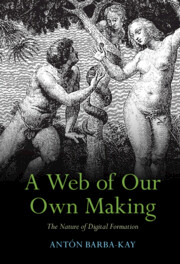Introduction
This Changes Everything (So What?)
Published online by Cambridge University Press: 04 May 2023
Summary
I introduce the question of what digital technology is – why it is so powerful, why it is different in kind from other media – by focusing on the convergence of two themes. First: Regarded as a tool, digital technology does not really do anything; it does not straightforwardly act on the material world. Unlike steam engines or wheels, it performs no particular physical task. Its scope of action is unspecified and unrestricted. Second: It is a social technology. Its appeal does not reside only in its instrumental means and uses, but in its power to connect us into a single global nervous system. This is in part because information technology is a technology of intentional responses. By responding to us in terms of information and by making our responses themselves the subject of measurement, digital devices engage us personally and in kind. These features thus represent the twin promises of total effectiveness and total responsiveness; that is, digital technology is both a new tool for measurement and a new medium of being in touch with others. It is this synthesis of measurement with medium – of quantitative analysis with social reality – that is most distinctive and transformative about it.
Keywords
- Type
- Chapter
- Information
- A Web of Our Own MakingThe Nature of Digital Formation, pp. 1 - 21Publisher: Cambridge University PressPrint publication year: 2023

